In Lewis, there are at least 30 of them, most of those thirty
being in the district of Eishken. Since the early 19th century, this large chunk
of the island has lain derelict. It was the old story that sheep made more money
than people. Incidentally, during the Napoleonic wars, the landowners were more
than happy to have people on their land. They could nicely rake in all the kelp,
which was the base material for gunpowder in those days. Because of the blockade
of Britain by Napoleon's fleet, imports of guano (bird droppings) were halted.
An alternative source of nitrate had to be found, and burning kelp was found to
be yielding nice quantities of potassium nitrate. But when the war was over, and
ships were able to bring in guano again, there was no more need for kelp in the
huge quantities that the war required. As stated above, sheep were found to be
more profitable than the dirt poor cottars, so the lairds employed all sort of
tactics, fair, foul and anything in between, to shift the people off their land.
Most readers will have heard the stories of the ship in the bay, a party of men
sent ashore to torch the houses and the residents told to board the ship. Others
were sent packing to another part of the island.
Lewis has seen quite a lot of these tactics. From the west of the island come stories of people from Uig being shunted across Loch Roag to Carloway; Gearrannan residents moved to Dalmore, then to Dalbeg, then to Shawbost. And further north. One man who worked for the Mathesons in their day was rewarded for his loyalty by having his croft extended at the cost of a neighbour's, who was in arrears in rent. A chunk of the neighbour's croft was taken away and awarded to the loyal worker. Who subsequently couldn't show his face in the village again.

Returning to the southeast, Eishken was cleared of its 30 villages in the 1820s. I have tried to locate them, but the only decent 19th century map in Stornoway library is post-clearance and shows no traces of the old settlements. When people were moved to other areas in the island, this led to a degree of 'congestion'. There was not sufficient land to go round. In the history of the Highlands and Islands, the year 1886 is a red-letter year. This was the year when the Crofters' act came into force, which awarded security of tenure to crofters, and made it impossible for landowners to summarily evict people from their land. The following few years were very important in Lewis, as they were punctuated by civil disobedience if not uprisings. One such event focused on Eishken, and has become known as the Parc Raids. In 1887, a group of men, led by a Balallan schoolteacher, committed a mass trespass on the Eishken estate and helped themselves to deer. As they sat consuming the venison, the men were ordered off the land, which they refused to do. The sherriff had to come down and read the men the riot act. As there was no intention to stay for any length of time, the park raiders left Kinloch Shell and were arrested. They had made their point. A monument to the raid stands by the Stornoway to Tarbert road, at the junction of the 7 mile road to Eishken.
To this day, Eishken stands empty. It is the playground of the rich for shooting deer. There are plans, as I mentioned in an earlier post, to build a 133-turbine windfarm on the estate. It would mean the desecration of a magnificent mountain landscape, not just of Eishken itself (with Beinn Mhor up to 1900 ft), but also of the adjacent Harris hills. Instead of planting turbines, why not use that piece of legislation I heard about which requires landowners to allow people to resettle on derelict and unused land? Wouldn't it be nice if places like those listed below were repopulated?
The number after each name represents the Ordnance Survey national grid reference, which should be prefixed with the letters NB to obtain the full reference. There were reputedly 36 villages, 27 of which I have the names. The names of another 9 are unknown to me, the location of several known ones eludes me as yet.

1 Bhalamos Beag - 291010
2 Bhalamos Mor - 298016
3 Caolas an Eilean -
4 Bagh Ciarach - 251021
5 Ceannamhor - 223067
6 Scaladale Beag - 220100
7 Scaladale Mor - 218120
8 Stromas
9 Brinigil - 277159
10 Bagh Reimsabhaigh - 258025
11 Smosivig - 273049
12 Glean Claidh - 253066
13 Brollum - 322031
14 Ceann Chrionaig - 311055
15 Mol Truis - 359056
16 Mol Chadha Ghearraidh - 367066
17 Ailtenish - 368088
18 Budhanais - 332100
19 Ceann Loch Shealg - 294107
20 Eilean Iubhard - 380100
21 Isginn [Eishken] - 326119
22 Steimreway - 346116
23 Cuiriseal
24 Gearraidh Riasaidh
25 Bun Chorcabhig - 263033
26 Gilmhicphaic - 217083
27 Ceann Sifiord - 295163
Lewis has seen quite a lot of these tactics. From the west of the island come stories of people from Uig being shunted across Loch Roag to Carloway; Gearrannan residents moved to Dalmore, then to Dalbeg, then to Shawbost. And further north. One man who worked for the Mathesons in their day was rewarded for his loyalty by having his croft extended at the cost of a neighbour's, who was in arrears in rent. A chunk of the neighbour's croft was taken away and awarded to the loyal worker. Who subsequently couldn't show his face in the village again.

Returning to the southeast, Eishken was cleared of its 30 villages in the 1820s. I have tried to locate them, but the only decent 19th century map in Stornoway library is post-clearance and shows no traces of the old settlements. When people were moved to other areas in the island, this led to a degree of 'congestion'. There was not sufficient land to go round. In the history of the Highlands and Islands, the year 1886 is a red-letter year. This was the year when the Crofters' act came into force, which awarded security of tenure to crofters, and made it impossible for landowners to summarily evict people from their land. The following few years were very important in Lewis, as they were punctuated by civil disobedience if not uprisings. One such event focused on Eishken, and has become known as the Parc Raids. In 1887, a group of men, led by a Balallan schoolteacher, committed a mass trespass on the Eishken estate and helped themselves to deer. As they sat consuming the venison, the men were ordered off the land, which they refused to do. The sherriff had to come down and read the men the riot act. As there was no intention to stay for any length of time, the park raiders left Kinloch Shell and were arrested. They had made their point. A monument to the raid stands by the Stornoway to Tarbert road, at the junction of the 7 mile road to Eishken.
To this day, Eishken stands empty. It is the playground of the rich for shooting deer. There are plans, as I mentioned in an earlier post, to build a 133-turbine windfarm on the estate. It would mean the desecration of a magnificent mountain landscape, not just of Eishken itself (with Beinn Mhor up to 1900 ft), but also of the adjacent Harris hills. Instead of planting turbines, why not use that piece of legislation I heard about which requires landowners to allow people to resettle on derelict and unused land? Wouldn't it be nice if places like those listed below were repopulated?
The number after each name represents the Ordnance Survey national grid reference, which should be prefixed with the letters NB to obtain the full reference. There were reputedly 36 villages, 27 of which I have the names. The names of another 9 are unknown to me, the location of several known ones eludes me as yet.

1 Bhalamos Beag - 291010
2 Bhalamos Mor - 298016
3 Caolas an Eilean -
4 Bagh Ciarach - 251021
5 Ceannamhor - 223067
6 Scaladale Beag - 220100
7 Scaladale Mor - 218120
8 Stromas
9 Brinigil - 277159
10 Bagh Reimsabhaigh - 258025
11 Smosivig - 273049
12 Glean Claidh - 253066
13 Brollum - 322031
14 Ceann Chrionaig - 311055
15 Mol Truis - 359056
16 Mol Chadha Ghearraidh - 367066
17 Ailtenish - 368088
18 Budhanais - 332100
19 Ceann Loch Shealg - 294107
20 Eilean Iubhard - 380100
21 Isginn [Eishken] - 326119
22 Steimreway - 346116
23 Cuiriseal
24 Gearraidh Riasaidh
25 Bun Chorcabhig - 263033
26 Gilmhicphaic - 217083
27 Ceann Sifiord - 295163
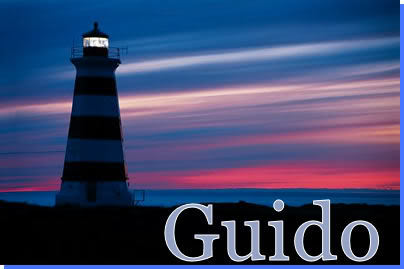



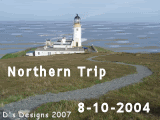

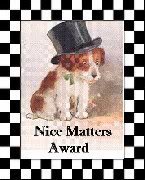

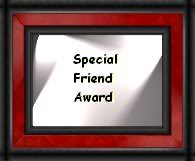

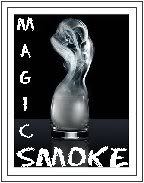
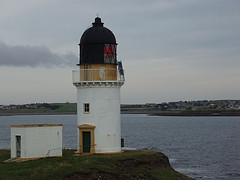
That was very interesting! Thanks for that! I really enjoy history of that type. Rhonda
ReplyDeleteI love history ,great ! its a good job AOL have allowed us more space ,otherwise you would have got a wireless for that entry lol ........Jan xx
ReplyDelete